In the video above you can observe two species, the Orange-eyed Tree Frog (Ranoidea chloris) and the Fletchers Frog (Platyplectrum fletcheri) using deep resonant croaks to attract females.
Background on amphibian breeding
Amphibians, including frogs and toads rely on water to reproduce, as their eggs and larvae require moist environments for development. Most species lay jelly-like eggs without shells, making them prone to drying out. Water provides the necessary conditions for these eggs to develop successfully and once hatched, larvae such as tadpoles, are aquatic and breathe through gills, using the water body to feed, grow, and transform into adults. Whether in permanent streams, temporary pools, or rain-filled depressions, the presence of water is critical for the continuation of amphibian life cycles, making them especially sensitive to changes in rainfall and water availability.
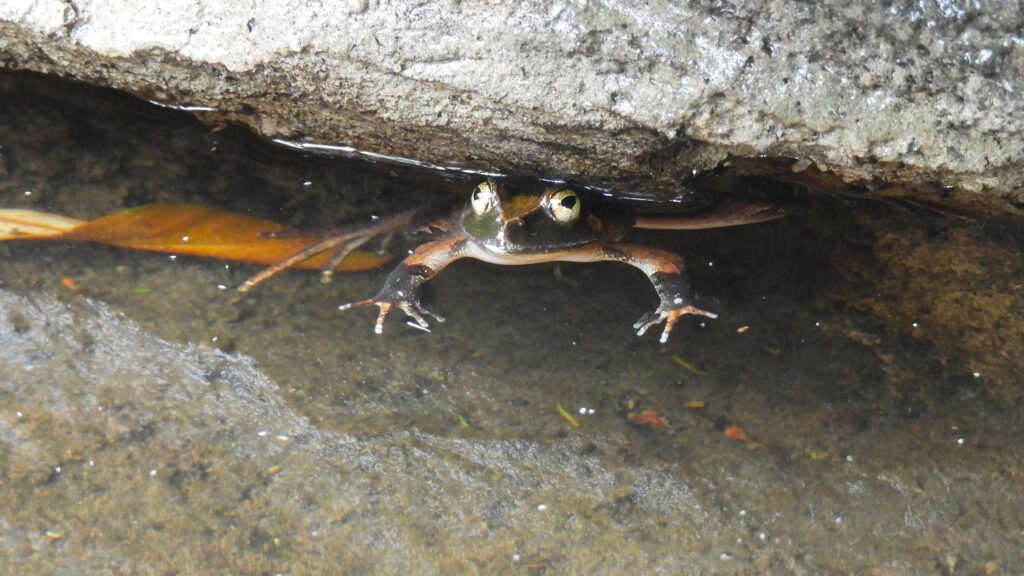
Adapting to the rainforest
In Southeast Queensland’s sub-tropical rainforests, frogs can be found not only near streams, creeks, and waterholes but also in moist leaf litter and the rainforest canopy. Given their need for water to breed, there are many frog species exhibit highly specialised mating behaviours that are closely tied to seasonal rain events.
A rain event, such as a thunderstorm, can signal the start of their brief but intense breeding period. Males call from temporary pools or flooded areas, using deep, resonant croaks to attract females. Once mating occurs, females lay eggs in shallow water, where the tadpoles develop rapidly before the pools dry up. This strategy reduces competition and predation but makes successful reproduction highly dependent on sufficient rainfall.
The Orange-eyed Tree Frog
The Orange-eyed Tree Frog is an arboreal species that are rarely seen below 5 meters from the ground and they become highly active during summer storms. Following heavy rain, the males descend from the canopy and congregate around temporary pools. Their loud, cackling calls echo through the forest during wet nights, drawing females to suitable breeding sites.
After mating, females lay up to 1000 eggs on submerged vegetation or the water’s surface. Tadpoles develop in around 41 days before migrating to the rainforest canopy.
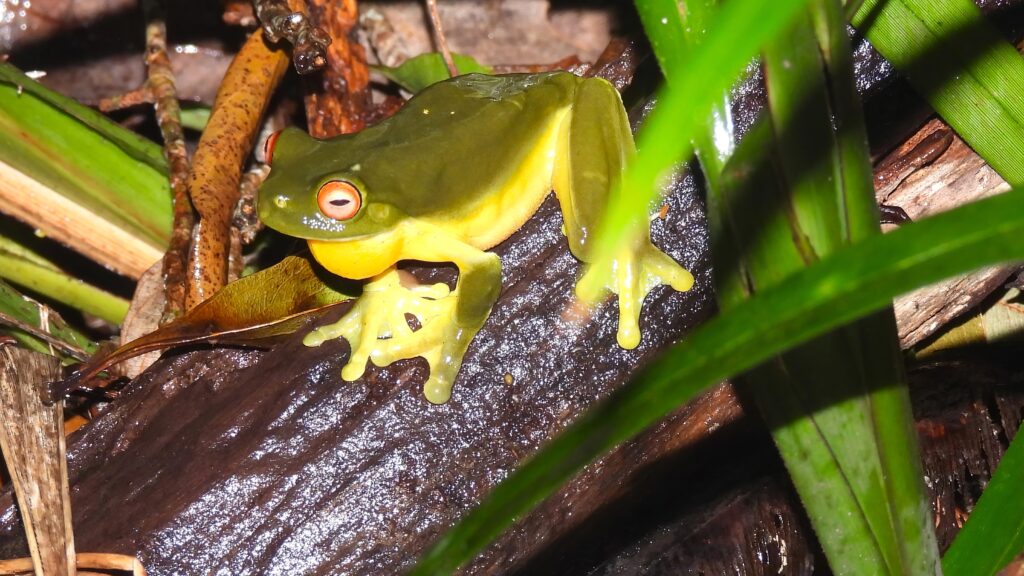
Fletcher’s Frog
Fletchers Frog is nocturnal and spends much of the day buried in the leaf litter layer or in moist soil and emerges only after heavy rain. Similar to the Orange-eyed Tree Frog, the Fletcher’s frog’s breeding behaviour revolves around ephemeral water bodies created by rainfall. Male frogs compete for territories containing pools while female frogs select mates. Females produce foam and lay eggs in the froth. The nest’s mucus has protective properties that improve the survival chances of the offspring.
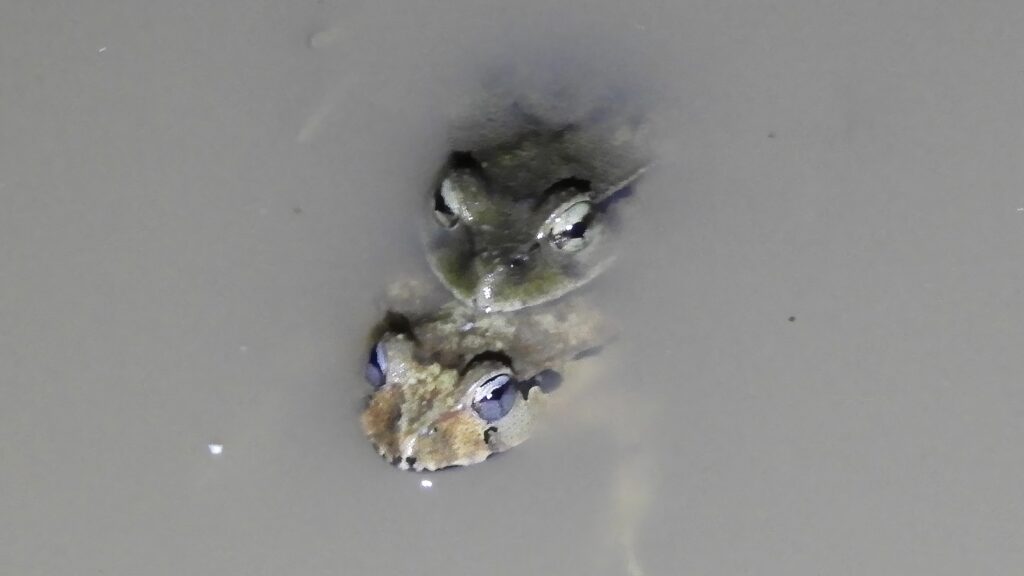
The tadpoles of Fletcher’s Frog are cannibalistic as commonly there is little food within the temporary ponds where eggs are deposited. Consequently, with a shortened time to develop, tadpoles eat each other with only the fittest surviving. The development of Fletcher’s frog progresses rapidly. Tadpoles emerge from their eggs within 3 to 4 days, and metamorphosis takes place after 20 to 30 days.
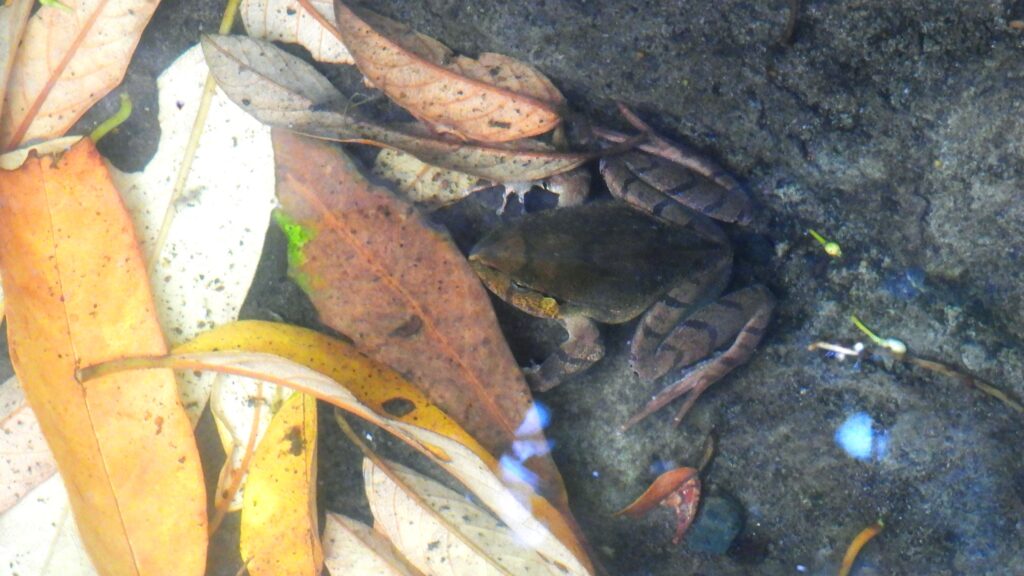
Conclusion
The rain-dependent reproductive strategy of some rainforest frogs limits breeding to wetter periods, but it also synchronises larval development with the availability of nearby aquatic resources. As such, these frogs are particularly vulnerable to changes in rainfall patterns caused by climate change, which may disrupt their breeding cycles and affect population stability.
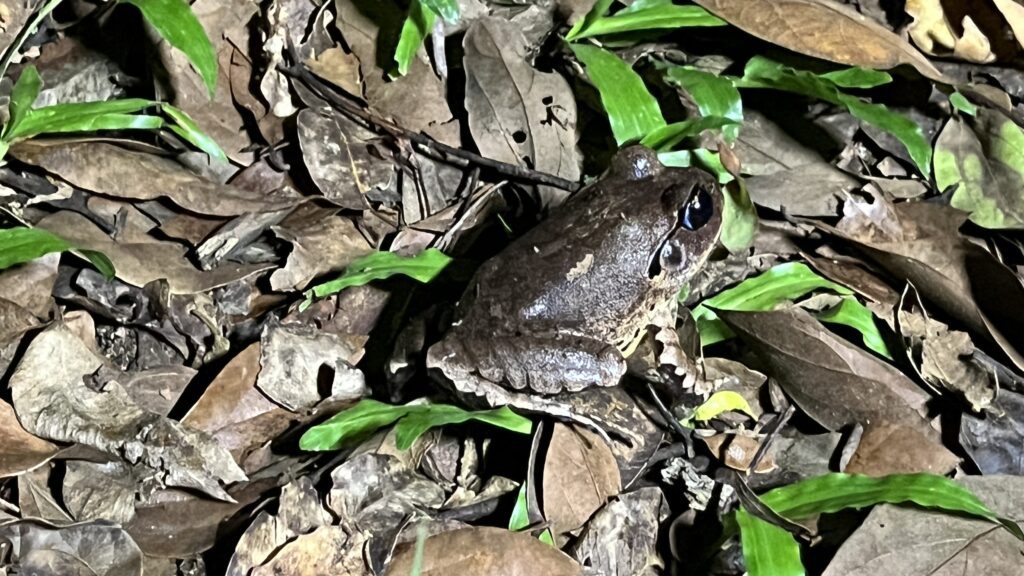
Further reading
Tyler, M.,J. & Knight, F., (2020) Field Guide to the Frogs of Australia, CRIRO Publishing DOI: 10.1071/9781486312467